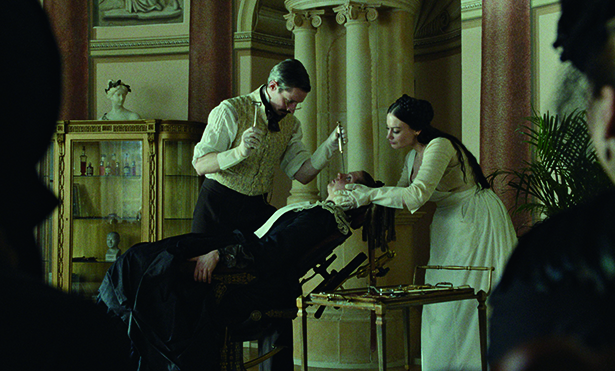노먼 레브레히트 | SINCE 2012
영국의 평론가가 보내온 세계 음악계 동향
음악 비평의 종말
모두가 예견하면서도 외면해 온 숙명
오래전부터 예측되었던 음악 비평의 종말은 지난여름 성큼 다가왔다. 7월 중순의 어느 날, ‘뉴욕 타임스’는 팝과 클래식 음악을 담당하던 수석 음악평론가 두 명과 수석 연극평론가 제시 그린, TV평론가 마거릿 라이언스를 해고했다.
세대의 변화 속에 불어닥친 칼바람

시아 미셸
이들을 ‘재배치’한 근거는 피의 숙청 그 자체보다 더 충격적이었다. 문화부 편집자인 시아 미셸의 메모는 이렇게 경고했다. “새로운 세대의 예술가와 관객들은 기존의 관습, 즉 ‘뉴욕 타임스’를 무시하며, 스마트폰은 팬덤을 발칸 반도처럼 분열시키고 있다”. 미셸이 느끼기에 독자들이 갈망하는 것은 ‘이 복잡한 세상을 이해하는 데 도움을 주는 신뢰할 만한 가이드’다.
제1차 세계대전의 사라예보 비유(편집자 주_단 한발의 총성으로 거대한 제국주의가 무너진 사건)는 집어넣어 두고, 쉽게 말해 ‘뉴욕 타임스’는 전문적이고, 잘 차려입고, 재치 있으며 매일 아침 갓 짜낸 주스(라틴어 jus primae noctis, ‘초야권’을 의미하는 언어유희)를 대령하던 평론가들과는 거리가 먼 음악평론가들을 찾고 있다. 얼간이들의 전성기는 끝났다.
재배치된 이들 중에는 1970년대 ‘라인스톤 카우보이’에서 테일러 스위프트까지 50여 년간 대중의 취향을 다뤄온 ‘뉴욕 타임스’의 팝 음악평론가 존 파렐레스도 있다. 그보다 미국 음악을 더 잘 아는 사람도 없지만, 그 역시도 결국엔 앱에 밀려날 것이다.
수석 자리에서 겨우 3년 활동한 클래식 음악평론가 재커리 울프는 작가 프란츠 파농보다도 더한 음악광이었음에도 날카로운 안목으로 독자들에게 존재감을 발휘해 왔다. 올해 마흔 살이 된 울프는 부고 담당으로 쫓겨났다. 덧없는 망각의 세계로 말이다.

해럴드 숀버그
이것이 왜 문제일까? ‘뉴욕 타임스’의 혹평 하나의 가치가 다른 신문에 실린 열 개의 호평보다 존재감이 크기 때문이다. 독자들은 ‘뉴욕 타임스’를 신뢰하고, 예술가들은 혈압 측정에 활용한다. ‘뉴욕 타임스’에 해럴드 숀버그의 진부한 음악평론이 마지막으로 실린지도 반세기가 넘었다. 그는 다음과 같은 유명한 문장을 쓰기도 했다. “어젯밤 카네기홀에서 잭 베니가 멘델스존을 연주했다. 멘델스존이 졌다.” 숀버그는 레너드 번스타인의 끝없는 적대감을 샀지만, 뉴욕은 그 날선 모든 말들을 받아들였다.
숀버그는 우리 세대의 멘토이자 체스 마스터였으며, 절대 물러서지 않는 훌륭한 피아니스트였다. 그의 뒤를 이은 ‘뉴욕 타임스’ 평론가 중 그만큼 대담한 이는 없었다. 어쩌면 시대 자체가 변한 것일지도 모르겠다.
위태로웠던 입지의 붕괴, 그리고 나비효과
사실 비평은 깨지기 쉬운 예술이다. 지휘처럼 비평 또한 대체로 사기행각과 궤를 같이한다. 음악가들이 손짓보다 지휘봉에서 더 많은 것을 본다면, 지휘자의 키는 15cm쯤 더 커졌을 테고, 평론가가 ‘비아그라를 복용한 베르디’라고 판단했다면 그는 스스로 꾸며낸 이야기를 믿기 시작할 것이다.
그 반대도 마찬가지다. 지휘자는 뚱한 첼리스트로 인해, 평론가는 줄어든 지면으로 인해 기가 죽을 수 있다. 이들의 자기 확신은 ‘고용 안정성’이라는 관습에 기반한다. 해고는 극도로 드문 일인데, 지휘자는 성 관련 이슈만으로도 해고당하지만, 평론가의 경우 그 정도는 아니다. 그러니 하루아침에 무려 평론가 넷을 날려버린 사건은 경미한 지진 정도로 치부될 일이 아니며, 상당한 여진도 뒤따랐다.
월간지 ‘베니티 페어’와 일간 신문 ‘시카고 트리뷴’은 재빠르게 영화 리뷰를 폐지했다. 주간지 ‘뉴요커’는 예술평론가를 해고했다. 영국의 주간지 ‘옵서버’는 클래식 음악 리뷰를 특집 기사 구석 자리로 축소했다. 1년 전 주간지 ‘선데이 타임스’는 음악 비평을 전면 폐지했다. 일간지들은 익일 리뷰를 포기하고 있다. “요즘에 공연은 못 봐도 리뷰를 읽으며 따라가고 있다”고 말하던 때도 있었지만, 더는 아니다.
지난 9월에는 또 다른 돌풍이 불었다. 전 세계 단 하나뿐인 연수 프로그램인 ‘루빈 음악 비평 연구소’의 운영이 잠정 중단되었다. 미국 샌프란시스코 음악원의 이 과정은 학생들에게 리뷰 쓰는 법을 가르치는 것은 물론, 이들이 ‘보스턴 글로브’ ‘댈러스 모닝 뉴스’와 같은 주요 신문사에서 1~2년간 인턴으로 일할 수 있도록 급여를 지급했었다. 졸업생들이 헤드라인을 장식하기 시작하던 차였다.
안타깝게도 설립자 스티브 루빈의 죽음과 게티 재단의 자선 계획 변경으로 인해 갓 데뷔한 신입 평론가들이 9월 이후로 월급을 받지 못하고, 교수진 또한 다시는 강단에 서지 못하게 되었다. 잔해 속에서 고철이라도 건져보려는 노력은 계속되고 있지만, 내가 보기엔 희망이 없다.
불투명한 미래를 앞두고
 앞으로 음악 비평이 향할 곳은 불확실하다. 어쩌면 인터넷상에서의 비평의 대부분은, 무보수의 평론가들이 선의로 공연 및 오페라에 대해 안내하는 수많은 사이트로 향할지도 모른다. 이들의 독자층은 불분명하고 사이트의 영향력은 미미하다. 스마트폰 화면으로 읽는 400단어 남짓한 모 필하모닉의 밤에 대한 분석은 전달 과정에서 의미를 잃는다. 할 말이 없다. 현재 웹상에서 가장 많이 재생된 평론가는 본인이 제일 싫어하는 음반에 대한 편견을 유튜브 채널에서 동네방네 짖어대는 뚱뚱한 뉴요커이다.
앞으로 음악 비평이 향할 곳은 불확실하다. 어쩌면 인터넷상에서의 비평의 대부분은, 무보수의 평론가들이 선의로 공연 및 오페라에 대해 안내하는 수많은 사이트로 향할지도 모른다. 이들의 독자층은 불분명하고 사이트의 영향력은 미미하다. 스마트폰 화면으로 읽는 400단어 남짓한 모 필하모닉의 밤에 대한 분석은 전달 과정에서 의미를 잃는다. 할 말이 없다. 현재 웹상에서 가장 많이 재생된 평론가는 본인이 제일 싫어하는 음반에 대한 편견을 유튜브 채널에서 동네방네 짖어대는 뚱뚱한 뉴요커이다.
그럼, 이제 비평에 남은 희망은? ‘비평’이라는 전문 분야의 유래가 1710년 조셉 에디슨이 친구 리처드 스틸과 함께 ‘스펙테이터’를 창간하고, 스틸이 ‘태틀러’를 창간한 영국 런던의 카페로부터 시작되었다는 사실을 기억해 볼 필요가 있다. 두 사람 모두 정치의 추악함에서 벗어날 수단으로서 예술을 비평했다. ‘스펙테이터’는 지금도 살아남고 번창하여 주간지 ‘크리틱’이나 ‘타임스 문예 부록’(편집자 주_1902년 ‘타임스’ 부록으로 시작. 1914년부터는 독립 간행물로 발행)을 비롯하여 계몽주의적인 강력한 의견 피력과 격렬한 논쟁을 고수하는 기타의 정기간행물과 함께 매대를 장식하고 있다. 적어도 이 잡지들이 앞으로 우리 문명을 평가할 척도인 셈이다.
‘뉴욕 타임스’는 나름대로 완전히 다른 방향을 모색하고 있다. 이들의 음악평론가 채용 공고는 이렇다. ‘멀티미디어 비평을 이해할 수 있는 역동적이고 디지털 중심적인 작가이자, 흡입력 있는 에세이·노트·리뷰를 쓸 수 있으며, 시청각 및 영상 요소를 글 속에 적극 활용할 열의를 가진 사람’. 글은 그렇게 끝에서야 등장한다. 참고로 월급은 12만 5천~17만 달러로, 범죄율 높다는 뉴욕 브롱크스에서조차 단칸방 하나 얻기도 힘들다.
골드 아멕스 법인카드로 우리 점심까지 내준 해럴드 숀버그를 기억하건만, 이제 평론가의 신뢰도는 산산조각이 났다. 숀버그는 이렇게 말하곤 했다. “뭔가를 훔쳐 달아난 사람은 결국 다시 돌아와 조금 더 훔치기 마련이다.” 장기적인 관점에서, 위대한 음악평론가는 대체로 옳았다.
번역 evener
노먼 레브레히트 칼럼의 영어 원문을 함께 제공합니다.
본 원고는 본지의 편집 방향과 일치하지 않을 수 있습니다.
The death of music criticism, long foretold, came a whole lot closer this summer. One day in mid-July, the New York Times sacked both of its chief music critics, pop and classical, along with chief theatre critic Jesse Green and Margaret Lyons, who covered TV.
The reason given for their ‘reassignment’ was more alarming than the bloodbath itself. A memo from culture editor Sia Michel warned that ‘new generations of artists and audiences are bypassing traditional institutions’ – the Times – while ‘smartphones have Balkanised fandoms’. What readers craved, Michel feels, are ‘trusted guides to help them make sense of this complicated landscape’.
In plain English, ignoring Sarajevo similes, what the Times is looking for is music critics who are as different as possible from the expert, well-dressed, wise-cracking reviewers who delivered first-night juice (wisecrack intended*) daily at breakfast. Those dodos have had their daybreak.
They include Times pop critic Jon Pareles who covered five decades of mass taste from ‘Rhinestone Cowboy’ to Taylor Swift. No-one knows more American tunes; he’ll probably be replaced by app.
The classical critic, Zach Woolfe, just three years on the beat, was more fanboy than Frantz Fanon but he could be incisive and he gave readers a good sense of being there. Woolfe, 40, has been dumped on the obits desk. Sic transit to oblivion.
Why does this matter? Because a hostile Times review is worth more than a rave in ten other papers. Readers trust it and artists use it to test their blood pressure. It has been over half a century since The Times’ last had a boilerplate music critic in Harold Schonberg, who famously wrote: ‘Last night at Carnegie Hall, Jack Benny played Mendelssohn. Mendelssohn lost.’ Schonberg earned the undying enmity of Leonard Bernstein, but New York devoured his every word.
He was a mentor to my generation, a chess master and brilliant pianist who never held back. None of his Times successors ever dared to be so bold, or maybe it is the times that changed.
Criticism, you see, is a fragile art. Like conducting, it is largely a confidence trick. If musicians see more in a baton than an aerial wave, the wielder will grow six inches taller. If a critic produces a ‘Verdi on Viagra’ verdict, he or she will start to believe their own myth.
The reverse is also true. Conductors can be deflated by sourpuss cellos and critics by a down-page slot. Their self-belief rests on a convention of unsackability. Dismissals are rare in the extreme. A conductor is fired only for sex, a reviewer not even for that. So when four chief critics are blown away in one afternoon, it’s no small earthquake and a shaft of aftershocks ensued.
Vanity Fair and the Chicago Tribune swiftly abolished film reviews. The New Yorker axed an art critic. In England, the Observer shrunk its classical music review to a corner of a features page. The Sunday Times abolished music criticism altogether a year ago. The dailies have given up overnight reviews. People used to say ‘I don’t go to many concerts but I keep up by reading the reviews.’ No more.
Just this month, another blow landed. The Rubin Institute for Music Criticism, the world’s only such training programme, was suspended. The course, at the San Francisco Conservatory of Music, not only taught students how to write reviews. It actually paid their salaries to work as interns for a year or two at major newspapers like the Boston Globe and Dallas Morning News. They were starting to make headlines.
Sadly, the death of founder Steve Rubin and a ‘shift in philanth-ropic strategy’ by the Getty Foundation means the fledgeling critics will not be paid after this month and the faculty will not convene again. Efforts are being made to save scraps from the rubble, but I’m not hopeful.
Where that leaves music criticism is in limbo – or, rather, on the internet, where a welter of well-intentioned sites publish concert and opera notices by mostly-unpaid reviewers. Their readership is uncertain, their influence marginal. Read on a telephone screen, a 400-word deconstruction of a night at the Philharmonic loses something in transmission. Words fail. The most widely watched web-crit is a paunchy New Yorker who bellows prejudices on a Youtube channel about his most-hated recordings.
What hope, then, for criticism? It’s worth remembering that the métier originated in London coffeehouses where Joseph Addison founded the Spectator in 1710 with his friend Richard Steele, who launched the rival Tatler. Both reviewed arts as a relief from the ugliness of politics. The Spectator survives and thrives, sharing a news shelf with The Critic, The Times Literary Supplement and other periodicals that cling to Enlightenment values of strong opinion and vigorous debate. They are the measure by which our civilisation will be assessed, if at all.
The New York Times, for its part, is looking for something else altogether. In its advertisement for a staff music critic it specifies: ‘You are a dynamic, digital-first writer who can conceive of multimedia-first criticism. You can write engaging essays, notebooks and reviews and also eager to embrace strong visual, audio and video components in your stories.’ Word comes last. The salary, by the way, is $125-170,000, barely enough to rent a bed-sit in the high-crime Bronx.
I remember Harold Schonberg paying for our lunch with an Amex corporate gold card. A critic’s credit has now been cut to shreds. Harold used to say: ‘Anyone who gets away with something will come back to get away with a little bit more.’ The great music critic was usually right, in the long term.
글 노먼 레브레히트
영국의 음악·문화 평론가이자 소설가. ‘텔레그래프’지, ‘스탠더즈’지 등 여러 매체에 기고해왔으며, 지금 이 순간에도 자신의 블로그(www.slippedisc.com)를 통해 음악계 뉴스를 발 빠르게 전한다







